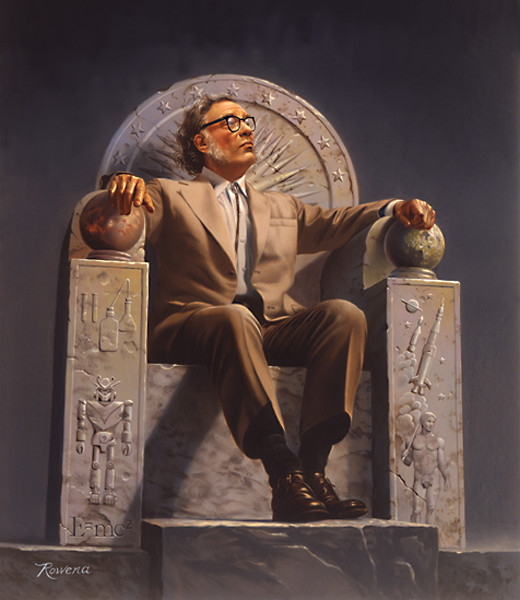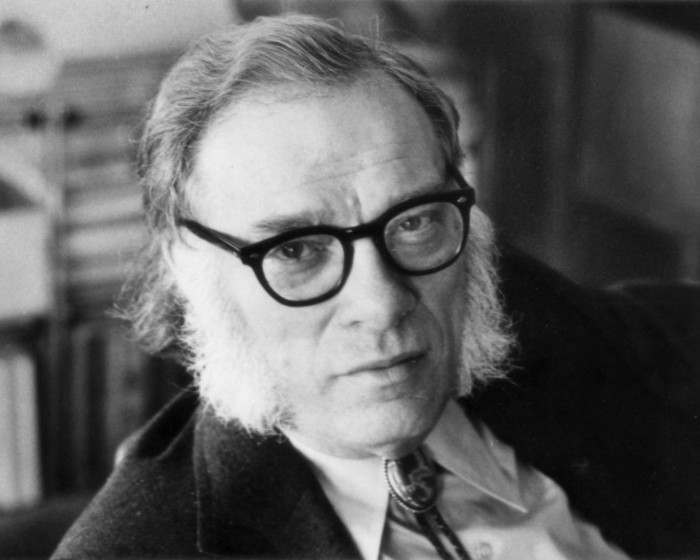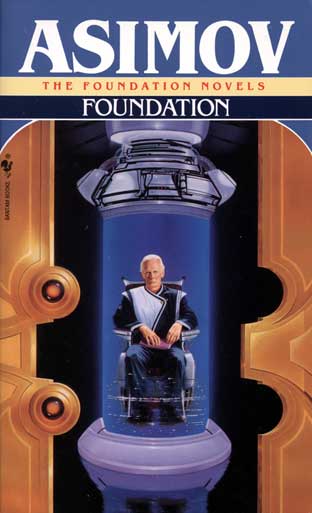Psychohistory: fiction or new science ?
Psychohistory is a scientific field, “historical analysis or interpretation using psychological and psychoanalytic methods”. (Merriam-Webster dictionary)
The main source for psychohistory is, however, science-fiction. It was invented by Isaac Asimov for the Foundation series. In the year 12067 of the Galactic Era, Hari Seldon, the genial inventor of psychohistory, predicts the fall of the Galatic Empire. Exiled in the outer rim of the Galaxy, he launches the Foundation, an operation designed to restore Galactic peace and unity.
A predictive, precise, testable science of humanity… in 12067 GE
Asimov is remarkably vague about the specifics of the psychohistorical science. He only explains that it is susceptible of mathematical modelization and of precise, testable predictions. In fact, except for Hari Seldon, no one in the Foundation needs to know how psychohistory operates. The Foundation is designed to change history by simply developing itself. The less its inhabitants know about psychohistory, the better. All they need is to keep faith in their destiny. And so, the reader, likewise kept in the dark about the deep forces in presence, excepts the Foundation to be swiftly destroyed as the disintegration of the Galactic Empire brings unprecedented chaos and violence. Instead, each crisis unexpectedly ends up strengthening the Foundation, which grows ever stronger as the rest of the Galaxy fragments end recedes in backwardness.
Asimov might have left it at that. However, he added a few precisions. The most substantial one appears at the beginning of Second Foundation (1995, p.9), where he states that:
“The individual human being is unpredictable, but the reactions of human mobs… could be treated statistically. The larger the mob, the greater the accuracy that could be achieved” (1995, p.9).
Asimov indicates that the galactic population, which numbers in the quintillions, is sufficient to allow precise psychohistorical predictions. Thus, Asimov deliberately places psychohistory out of reach of modern science. Since humanity lives on a single world, and numbers only a few billions, it is not an object suitable for psychohistory.
In fact, a mindful reader might see that this explanation is contradicted, almost from the start, as Seldon is capable of predicting events that affect much more limited numbers, starting by the result of his own trial by a few judges. He precisely calculates the odds of being exiled as opposed to being put to death. In the following chapters it also appears that Seldon has accurately predicted the rise of the Foundation, a small settlement, originally with a few hundred inhabitants only. Finally, in the prequel of the series, which he wrote last, Asimov suggests that Seldon has in fact precise notions of individual psychology. In fact, Seldon tests his psychohistorical model on limited populations before applying them to the whole Galaxy. In retrospect, that U-turn on psychohistory was already evoked in Second Foundation where he named psychohistory “the quintessence of sociology” (1995, p.9).
But it is remarkable that these details and contradictions did not affect much the fascination exercised by psychohistory. The influence of Asimov’s vision of psychohistory might be said to be in inverse proportion with its consistence and coherence. But the truth is that it is simply unaffected by these secondary questions.
There is no reason to be surprized. The power of fascination of psychohistory does not ultimately rest on the explanations of Seldon, but on the absence of a predictive human science in our reality.
It could not be plainer that Asimov frames psychohistory as a science akin to our exact or natural sciences. In the introduction to Foundation and Empire he presents it as an equivalent to contemporary physics. There is no better way to underline the contrast with contemporary human sciences, which would be unable, even remotely, of such precise predictions.
As a result, the scenario created by Asimov works perfectly. No one can dispute that it is a fiction, and yet the parallels between the fictional world and ours, and between fictional science and actual works maintain readers intrigued throughout the series.
Asimov: some of his sources of inspiration
Asimov’s avowed (and recognizable) source of inspiration for the declining Galactic Empire was Gibbon’s The History of the Decline and Fall of the Roman Empire. Many have wondered, however, if Asimov had not, consciously or not, also been influenced by Marxism, as he was writing it the 1940s and 1950s, in the dead of the Cold War, when soviet power was at its apex. Marxism was the official soviet ideology and claimed to be based on an exact science of human relations: “historical materialism”.
It is even more likely that Asimov should have been influenced by the then recent development of opinion surveys, who pretended to predict electoral results not by explaining individual choices but merely by considering statistical trends. That is exactly how Asimov describes psychohistory, which, likewise, seems to have discarded causal and theoretical foundations in favour of mere technics involving stochastic or “mathematical” treatment.
These questions matter of course less than the constrains that Asimov faced as a writer. He could not be too be specific about psychohistory without destroying the necessary distance between fiction and reality. And he could not devise a plot where no one played any heroic role, where only the deep forces of psychohistory operated, on their own.

enthroned with symbols of his life’s work
Asimov had evidently a personal desire to explain psychohistory a little better, but could not. This tension can be read for instance in one revealing choice of words: “mobs”. Mobs differ from mere multitudes. They are not just a random collection of humans. They are groups of humans that seem to act as if possessed by a common will, independent from each participant’s own will. The main challenge of psychologists who endeavoured to explain mobs, like Le Bon, was to explain how individual will and judgment could happen to be suspended when the individual was part of a mob. Le Bon, in particular, drew a parallel with hypnosis. The use of the word “mobs” confirms the attempt at disconnecting the psychology of the individual, “unpredictable” from that of an immensely huge population. Asimov has chosen his words carefully and done some research.
It is also possible to read in these precious few indications that Asimov expects perhaps his readers to do their part. If we build on the notion introduced by Asimov, that galactic quintillions act like a gas and that a kind of Brownian movement agitates human interactions, we are left thinking that just like Brownian movement can be explained at the molecular level (thanks Einstein), human interactions could be explained at the level of the individual, or, even better, that such an explanation is in fact required to ascertain the foundations of psychohistory and distinguish it from a mere stochastic approach that would be at the mercy of the first unexpected “black swan” event.
To be certain, by explaining that Seldon has actually tested his statistical model on the whole history of the Galactic Empire and beyond (tens of thousands of years), he suggests that “black swans” can be practically ruled out. But still. Something is missing to truly establish psychohistory as the “science” it claims to be, rather than as a mere “art”, like the one performed by an expert interpreting Gallup polls.
Which brings us back to reality, and the possibility of psychohistory in our world.
References:
Merriam-Webster. (n.d.). Psychohistory. In Merriam-Webster.com dictionary. Retrieved November 25, 2022, from https://www.merriam-webster.com/dictionary/psychohistory
Asimov, I. (1995) Second Foundation. London: Harper Collins
Learn more:
On Foundation series: Wikipedia
On Isaac Asimov : Encyclopedia Britannica
Psychohistory and human science fields: a discussion of possible convergences by Mark Cole

